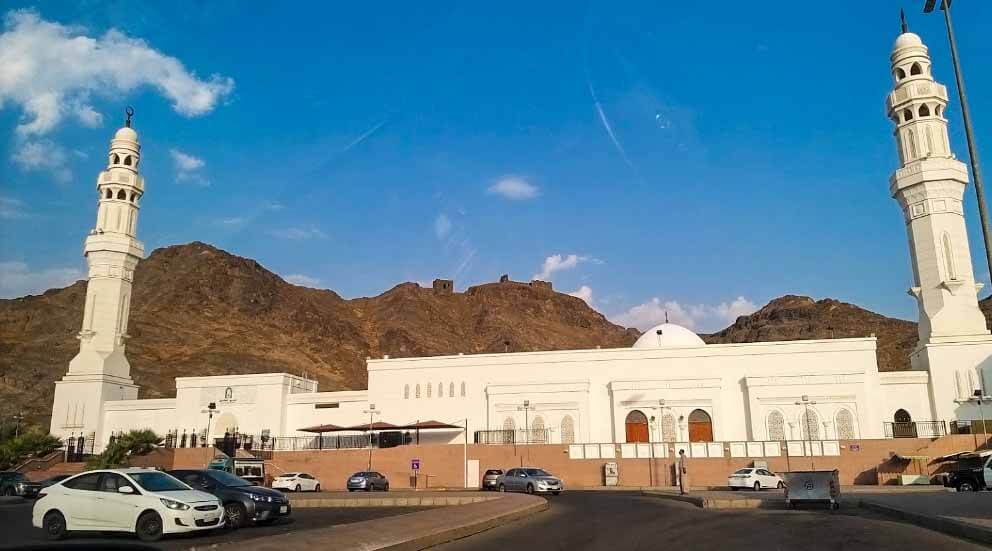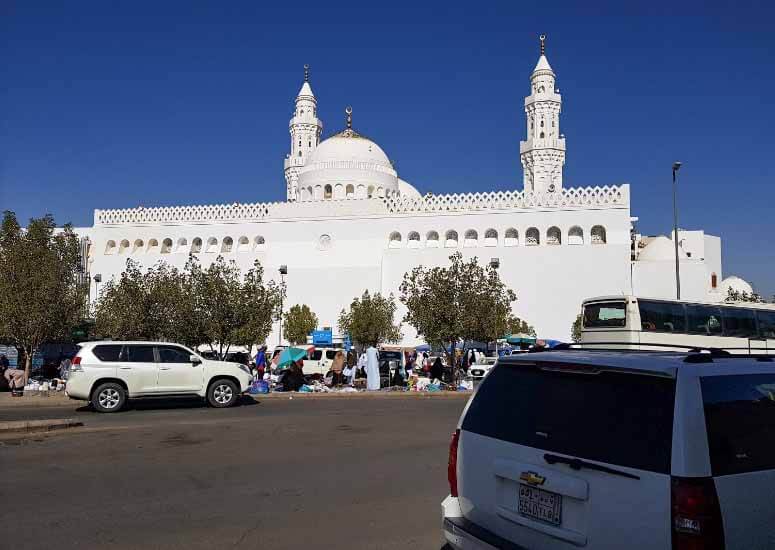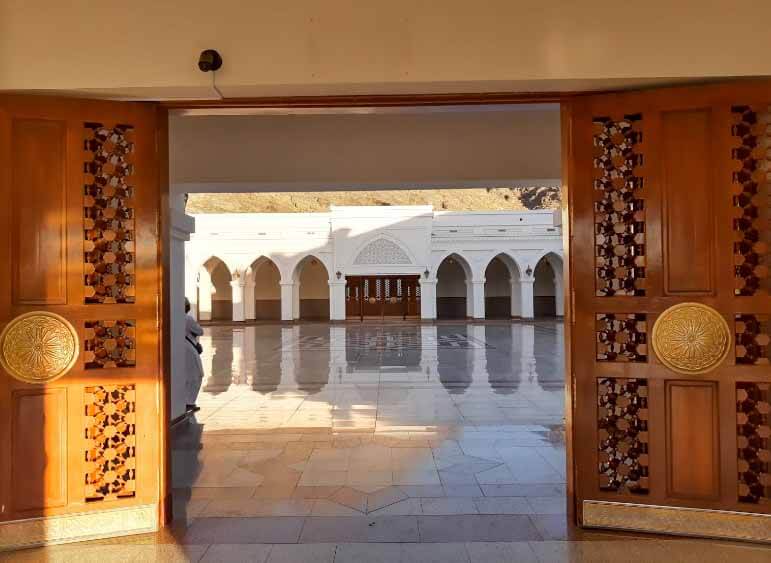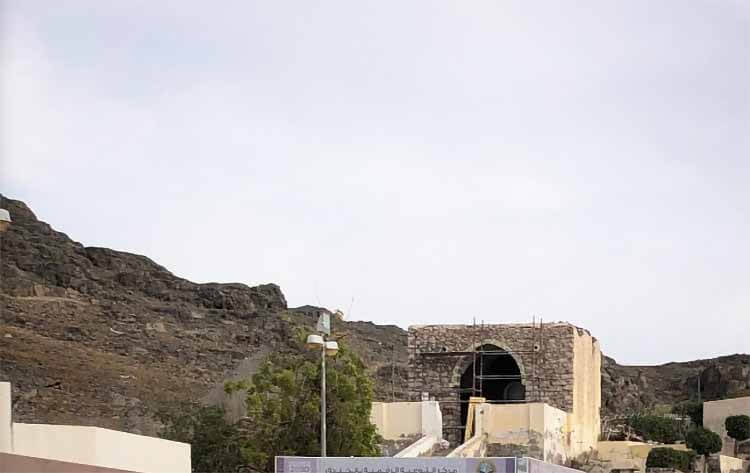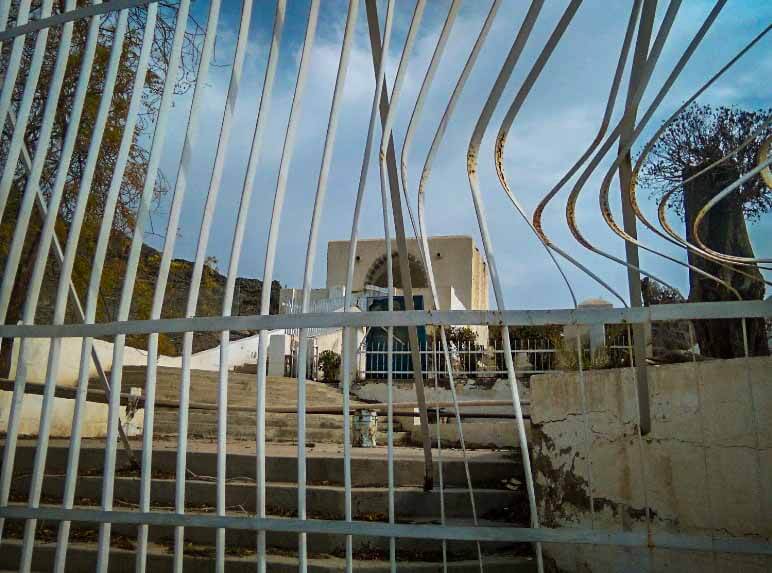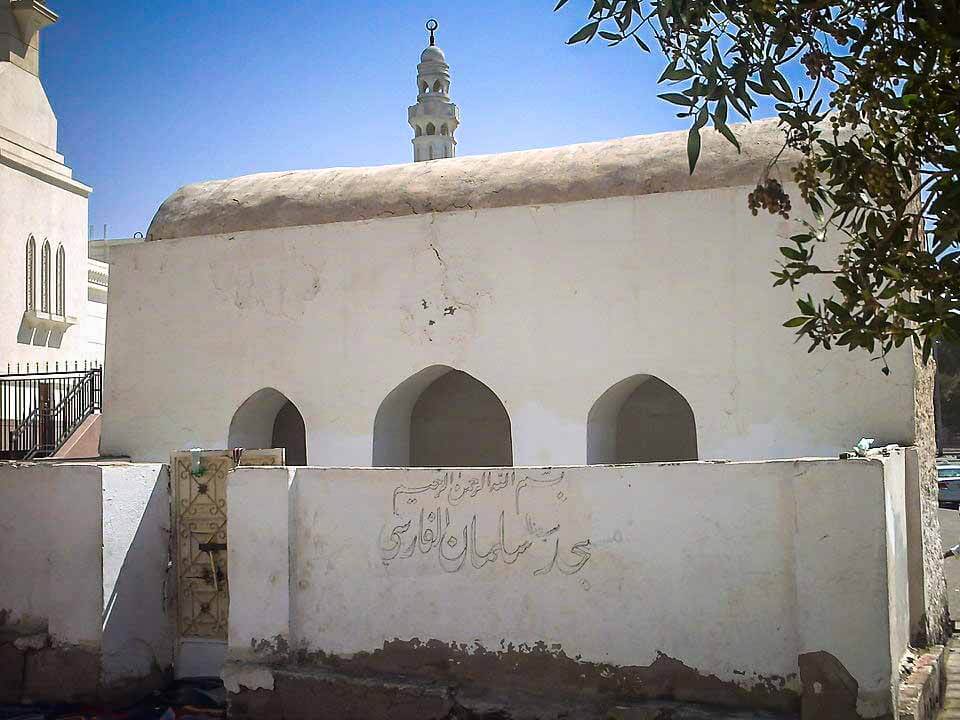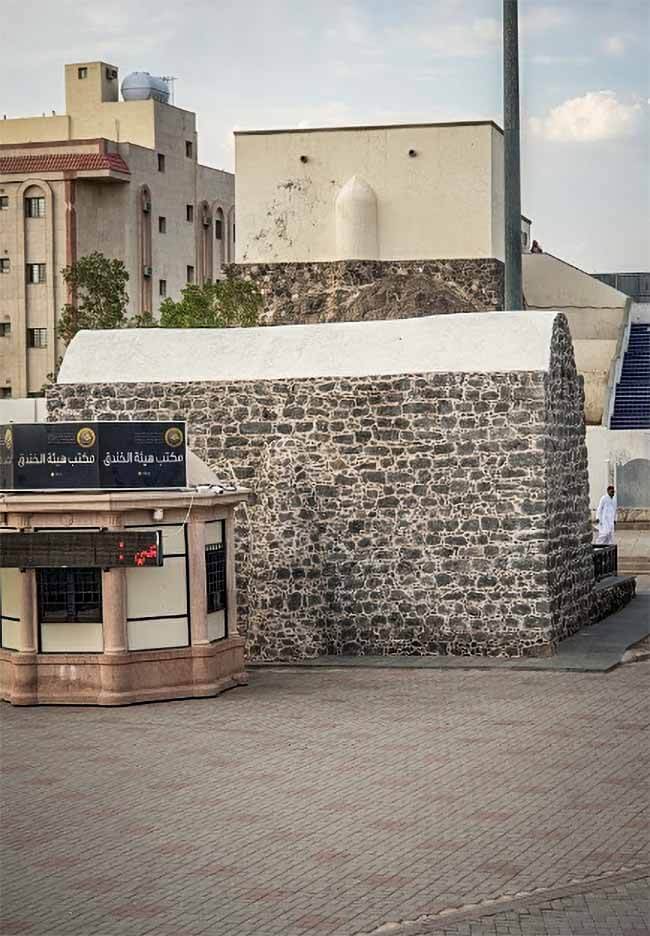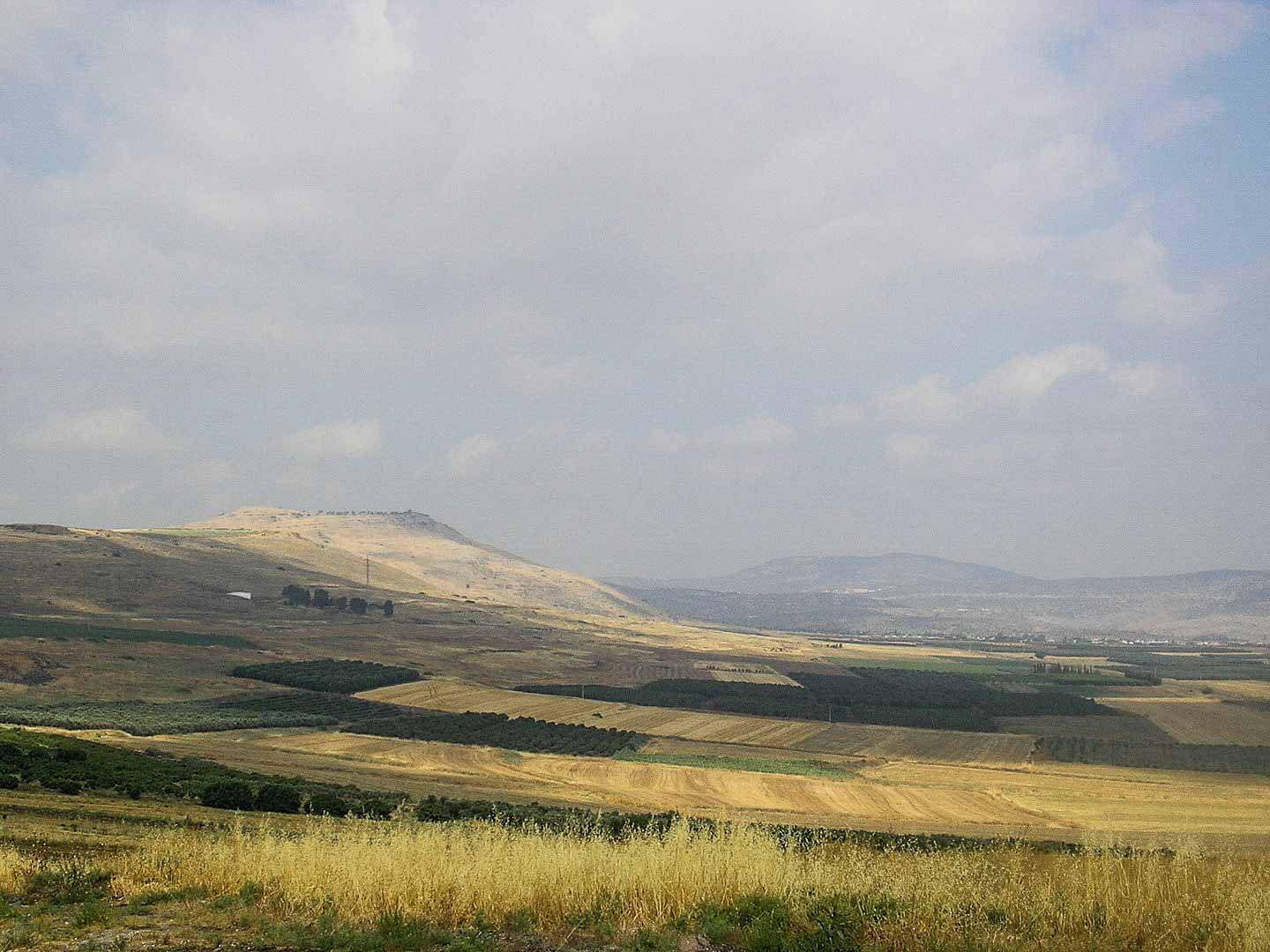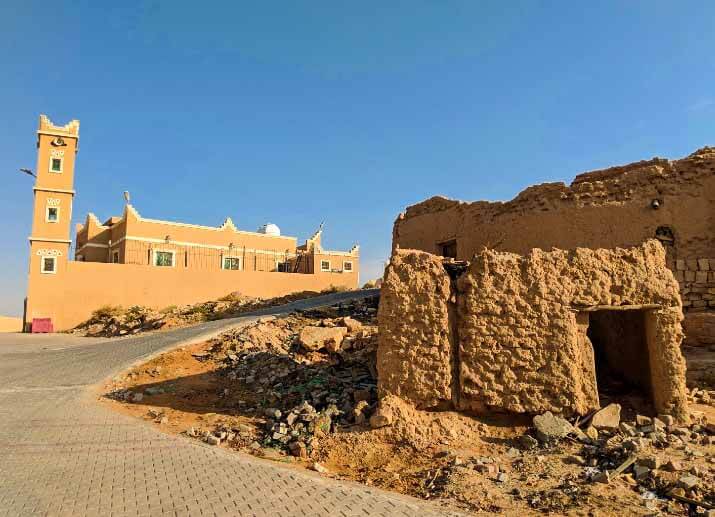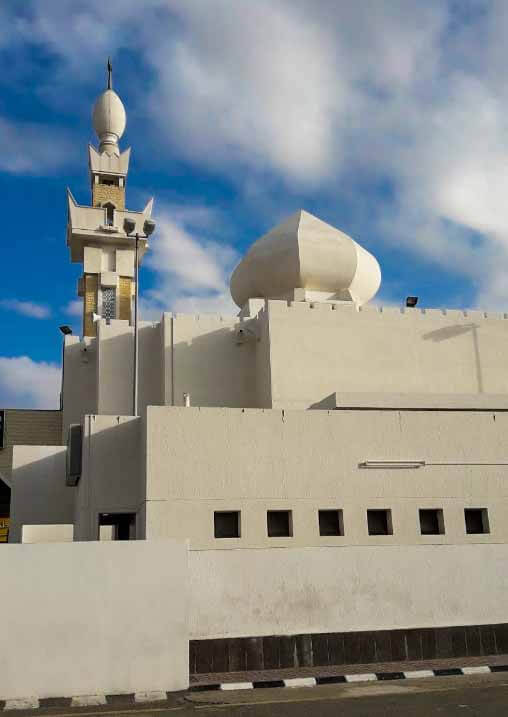Medinah Sharif, Saudi Arabia
Three Assimilated mosque
Hz. Ali ibn Abi Talib رضي الله عنه Mosque
Hz. Bibi Fatimah Az-Zahra رضي الله عنها Mosque
Hz. Salman Al-Farsi رضي الله عنه Mosque
Hz. Al-Fath Mosque
Coordinates: 24.476917, 39.596009
The Battle of the Trench (Ghazwat al-Khandaq), also known as the Battle of Khandaq and the Battle of the Confederates (Ghazwat al-Ahzab), was a 27-day-long defence by Muslims of Yathrib (now Medina sharif) from Arab and Jewish tribes.
The strength of the confederate armies is estimated around 10,000 men with six hundred horses and some camels, while the Medina sharif defenders numbered 3,000.
The largely outnumbered defenders of Medina, mainly Muslims led by Hz. Prophet Muhammad ﷺ, dug a trench on the suggestion of Hz. Salman farsi رضي الله عنه , which together with Medina’s natural fortifications, rendered the confederate cavalry (consisting of horses and camels) useless, locking the two sides in a stalemate.
Hoping to make several attacks at once, the confederates persuaded the Muslim-allied Medinan Jews, Banu Qurayza, to attack the city from the south. However, Hz. Prophet Muhammad’s ﷺ diplomacy derailed the negotiations, and broke up the confederacy against him.
The well-organised defenders, the sinking of confederate morale, and poor weather conditions caused the siege to end in a fiasco.
The siege was a “battle of wits”, in which the Muslims tactically overcame their opponents while suffering very few casualties.
Efforts to defeat the Muslims failed, and Islam became influential in the region. As a consequence, the Muslim army besieged the area of the Banu Qurayza tribe, leading to their surrender.
The defeat caused the Meccans to lose their trade and much of their prestige.
The battle is named after the “trench”, or khandaq, that was dug by Muslims in preparation for the battle.
The word khandaq is the Arabised form of the Middle Persian word kandag (meaning “that which has been dug”).
Hz. Salman farsi رضي الله ع advised Hz. Prophet Muhammad ﷺ to dig a trench around the city.
The Qur’an uses the term confederates (الاحزاب) in sura Al-Ahzab [Quran 33:9–32] to denote the confederacy of non-believers and Jews against Islam.
The Seven Mosques
The Seven Mosques (Al-Masajid As-Sab’ah) or Sab’u Masajid is a complex of six small historic and often visited mosques in the city of Medina sharif.
People visit six small mosques in the region, but add a seventh one, known as the “Mosque of the Two Qiblas” which is about a kilometer away from the others.
These mosque are often visited by pilgrims, both Sunni and shia because there is a great virtue of visiting these mosque as they are one of the oldest masajids in the world and are built by Sahabas,
Location of the mosques
These mosques are located in south of Mount Sala’ which was the scene of the Battle of the Khandaq.
Mosques in the complex
Al-Fath Mosque
This is the largest mosque of all, and it is located beneath of Mount Sala’ on the western part. It is narrated that this mosque is named as “Al-Fath” due to the account that Hz. Prophet Muhammad ﷺ prayed here during the Battle of the khandaq, and the battle ended in Muslim victory (in Arabic, “Fath” or “Fatah” means “conquest” in Islamic context).
The mosque was built during the time of the Hz. Umar bin Abdul Aziz رضي الله عنه, and renovated by the minister Saifuddin Abu al-Hija in 1154 during the time of the Sharifate of Mecca.
Salman Al-Farsi Mosque
The Salman Al-Farisi Mosque is located south of Al-Fath Mosque, 20 meters from the base of Sal’ mountain.
It is named after Hz. Salman رضي الله عنه, the companion of the Prophet ﷺ who recommended digging a trench to fortify the city from an invasion.
It has one hall at 7 meters long and 2 meters wide. It was also built while Hz. Umar ibn Abd Al-Aziz رضي الله عنه was governor of Madinah.
In 575 H (1179 CE) it was rebuilt on the orders of minister Said Al-Deen Abu Al-Haija. It was rebuilt again during the reign of the Ottoman Sultan Abd Al-Majid I.
Abu Bakr As-Siddiq Mosque
The Abu Bakr Al-Siddeeq Mosque is 15 meters to the southwest of Salman Al-Farisi Mosque. It was reported that Hz. Abu Bakr رضي الله عنه, when he was caliph, prayed Eid prayer there. This is why it was named after him. It was also reported that the Prophet (peace be upon him) prayed the Eid prayer there.
Umar bin Khattab Mosque
The Umar ibn Al-Khattab Mosque is 10 meters to the south of Abu Bakr Mosque, opposite Al-Ghamamah mosque and close to the Prophet’s Mosque. There is not much historical detail about the mosque, but there is speculation that it could be the ancient mosque at Al-Durrah place where Hz. Umar رضي الله عنه may have prayed during his reign as caliph.
This would explain why it was named after him. It has an open yard and is eight steps above the ground. Its structure is similar to Al-Fath Mosque, which indicates that the two structures may have been built and renovated together.
Sa’ad bin Ma’az Mosque
Ali bin Abi Talib Mosque
Located in the south of Fathimah Az-Zahra Mosque on a small hill. This mosque has a length of 8.5 meters and width of 6.5 meters. It is narrated that Hz. Ali رضي الله عنه joined the Battle of the khandaq here.
Today, local government of Medina sharif is renovating this mosque while maintaining the original shape, and building a large park surrounding it as a decoration of the small building.
Fatimah Az-Zahra Mosque
The Fatimah Al-Zahra Mosque is known as Mus’ad ibn Mo’az Mosque. It is the smallest of the group and measures 4 meters by 3 meters. It has one small step. It has a similar structure to other mosques in the area and may have been built during the Ottoman era, most likely during the reign of Sultan Abd Al-Majid I in 1851




